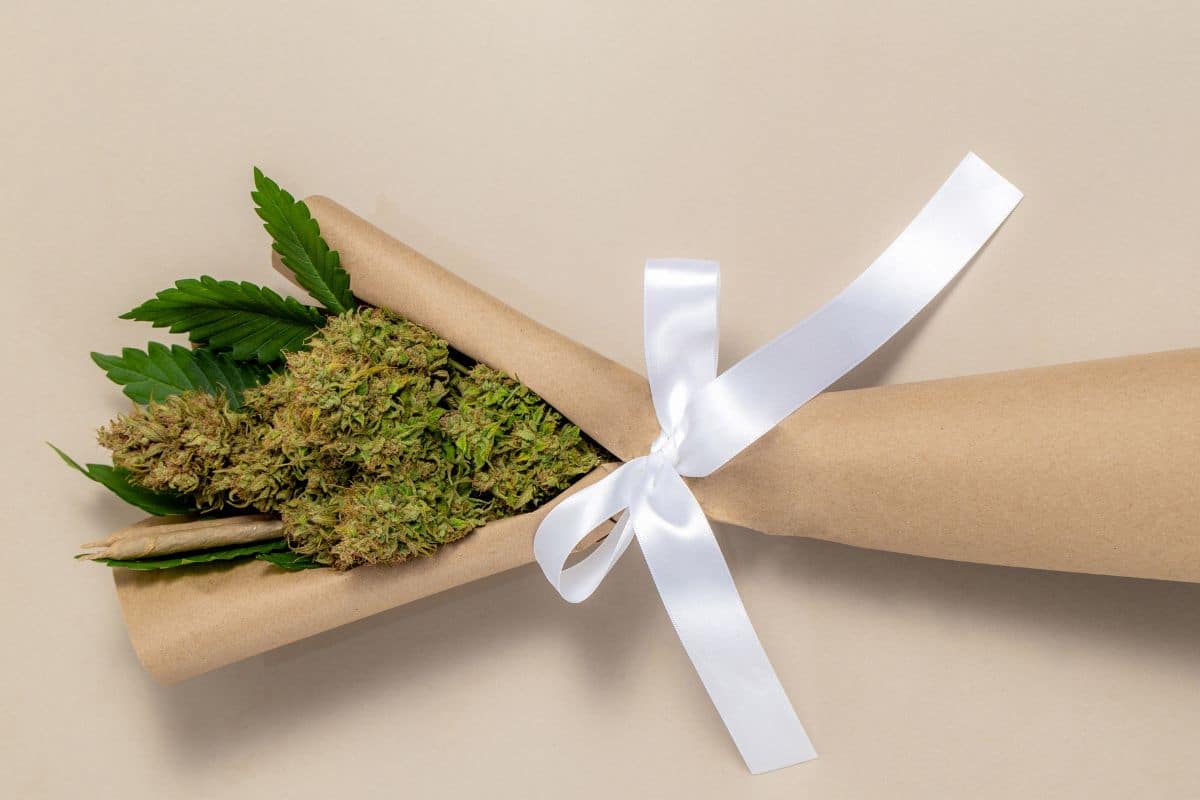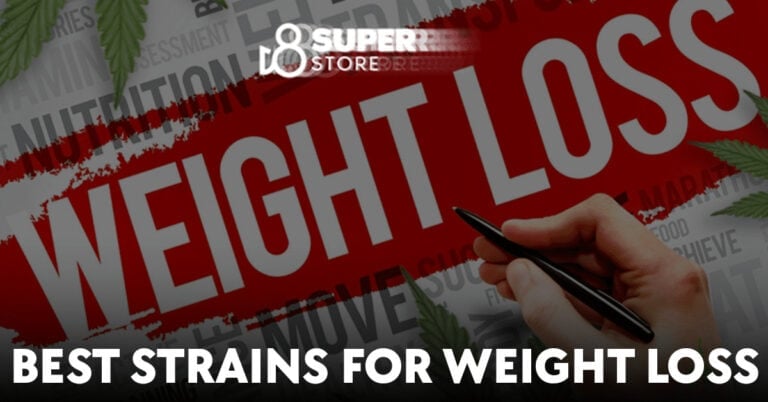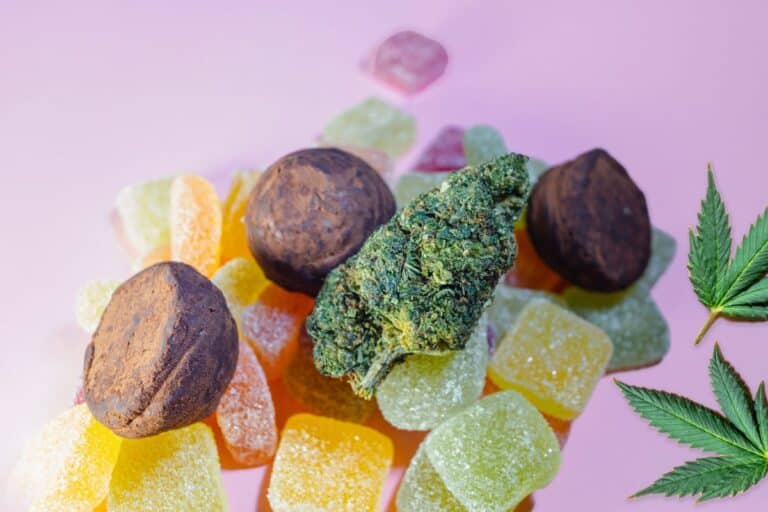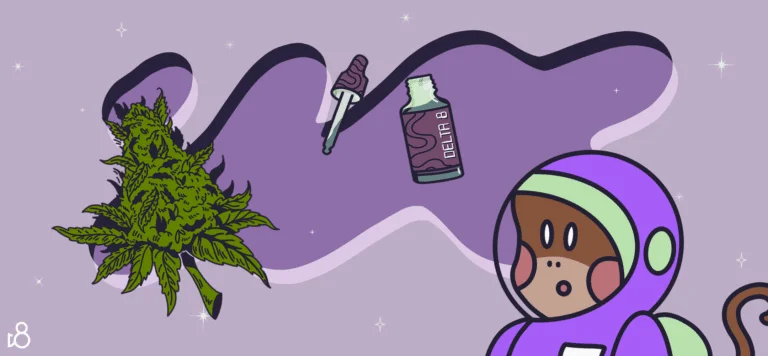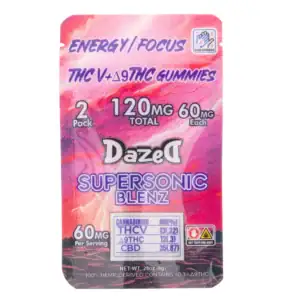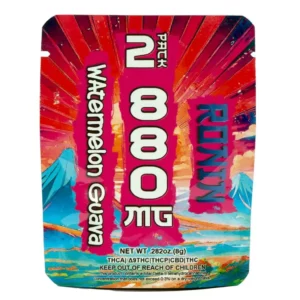What Does Good Weed Look Like: Identifying Top-Quality Cannabis
Unraveling the mysteries of top-shelf weed can truly transform your cannabis journey. Spotting primo bud involves noticing a few key traits. Here’s a hot tip: Seek out a rainbow in your nug. You’re aiming for vibrant greens mingled with splashes of orange, purple, or blue—a sign of exceptional care from seed to smoke. And those sparkly bits, known as trichomes? Consider them the herb’s dazzle, showcasing its strength. The more it looks like a winter morning frost, the better the quality. Stick around, and we’ll share secrets on identifying that high-grade magic that might just turn your world upside down.
Table of contents
The aroma of cannabis is another telltale sign of its quality. High-quality weed will have a strong, pungent smell, suggesting the presence of fresh, potent terpenes which contribute both to the flavor profile and therapeutic effects. Good weed may emit a variety of scents, from earthy and skunky to sweet and fruity, indicating a well-preserved product.
Lastly, the structure of the buds should be dense and well-trimmed, without seeds or excessive stems. Stickiness to the touch is a positive attribute, reflecting a high level of resinous trichomes, which are carriers of the cannabinoids and terpenes that make for an effective and enjoyable cannabis experience. Avoid buds that are dry, crumbly, or contain an excess of stems and leaves, as these are clear indicators of subpar cannabis.
Understanding Cannabis
When evaluating the quality of cannabis, it’s crucial for you to have a clear understanding of various factors that contribute to its profile. Cannabis plants come in mainly two strains: Indica and Sativa. Indica strains are known for their relaxing effects, often contributing to a sense of calm and can be beneficial for sleep. On the other hand, Sativa strains typically provide a more energizing experience.
The properties of cannabis are largely determined by its cannabinoids and terpenes content. Cannabinoids are chemical compounds found in cannabis, with THC (tetrahydrocannabinol) being the most well-known due to its psychoactive properties that can induce a “high.” CBD (cannabidiol), another significant cannabinoid, is recognized for its potential therapeutic effects without causing significant psychoactive responses. CBN (cannabinol), although less talked about, is another cannabinoid typically associated with aiding sleep.
| Cannabinoid | Effects |
| THC | Psychoactive |
| CBD | Non-psychoactive |
| CBN | Sleep-inducing |
The terpene profile of a cannabis plant refers to the unique blend of aromatic compounds that contribute to its scent and can also influence the effects. Different terpenes can promote relaxation, stress-relief, or even increase focus.
Here’s a simplified list of what to look for in high-quality cannabis:
- Appearance: A higher-quality bud will usually have a vibrant color palette ranging from deep greens to purples, often accompanied by fiery orange or red hairs and a visible coating of trichomes, which look like tiny crystals.
- Scent: A strong, fresh smell is a sign of a rich terpene profile.
- Texture: The buds should be sticky and spongy when you touch them, indicating that they are neither too dry nor too damp.
- Cannabinoid Content: Labels should indicate levels of THC and CBD, allowing you to understand the potential effects of the product.
By keeping these points in mind, you’ll be better equipped to select cannabis that meets your preferences and needs.
Visual Inspection

When evaluating the quality of marijuana, a thorough visual inspection is essential. Discerning the nuances in color and structural integrity can offer significant insight into the weed’s potency and quality.
Color and Appearance
Good weed, often referred to as dank weed or top-shelf weed, should exhibit a vibrant green color. You might also notice flecks of orange or purple, indicative of healthy, mature plants. The presence of shimmering trichomes—tiny, crystal-like resin glands—speaks volumes about weed quality. These trichomes should be plentiful and visible to the naked eye, resembling a frosty coating over the surface of the buds. Avoid weed that appears overly brown or has an abundance of stems and leaves intermixed with the flowers.
- Desirable Colors: Rich green with possible hints of orange or purple.
- Trichomes Presence: Look for an abundance of shiny crystals.
- Avoid: Excessive brown or yellow discoloration, overly dry appearance.
Structure and Form
The architecture of the nugs reveals much about the care taken during cultivation and post-harvest processing. Premium weed should have a dense and robust structure, neither too dry to crumble upon touch nor too wet, which could lead to mold. Each nug should be well-trimmed, with extraneous leaf matter removed to expose the flower’s full character.
Ask your budtender about the cultivation practices that lead to a more potent product, as these often result in well-structured nugs. A properly cultivated and cured nug should be somewhat sticky to the touch, indicating a high resin content and a potentially more potent experience. Avoid nugs that appear fluffy or overly compressed, as these could be signs of underdevelopment or poor handling.
- Optimal Structure: Compact, sticky, and sturdy.
- Curing Indicators: Slight springiness to touch, not too dry or wet.
- Red Flags: Fluffy, overly compressed, or crumbly nugs.
Olfactory and Tactile Clues
When assessing the quality of cannabis, your senses are your most reliable tools. The scent and texture of the weed provide critical information about its potency, freshness, and whether it has been properly cured.
Scent and Aroma
Good quality cannabis is often distinguished by its strong and distinctive scent, which can vary from skunk to pine to fruit based on its terpene profile. Terpenes are aromatic compounds that define the unique aromas and flavors of different strains. A pungent aroma typically indicates a high terpene content, suggesting the weed is fresh and has potent qualities. In contrast, a moldy or musty smell can signify the presence of mold, which renders the weed unsafe for consumption.
Loud weed refers to cannabis that has a very strong smell, indicating a rich terpene presence and often a more intense experience. When you pick up a scent that’s loud, dank, or pungent, it generally equates to high-quality and effective cannabis.
Touch and Texture
The tactile aspect of cannabis can tell you a lot about its quality. High-quality buds are typically sticky to the touch due to their trichome content—the crystal-like structures that house THC, CBD, and other cannabinoids. A good cure, which is the process of slowly drying and curing weed, results in buds that are neither overly dry nor too sticky. If the buds crumble easily when handled, they are likely too dry and have lost potency. However, if they are too moist or sticky, they may not have been dried and cured properly, potentially leading to issues like mold or mildew.
Quality Indicators

When evaluating cannabis, knowing quality indicators is crucial. You’re looking for high-quality cannabis that offers both an enjoyable experience and value. Note the presence of trichomes and resin which correlate with potency, and the prevalence of seeds and stems, which should be minimized in top shelf varieties.
Trichomes and Resin
The trichomes are the small, crystal-like structures coating the surface of the bud. They house the THC content and other cannabinoids, and their abundance is a good indicator of potency. High-quality cannabis often appears frosty due to these resin glands. If your cannabis glistens in the light with a sticky feel when handled, you’re likely holding a private reserve or top shelf product.
Seeds and Stems
Quality cannabis should be virtually free of seeds and contain minimal stems. Seeds are an indication that your cannabis may not provide the purest experience and can affect the overall quality. Stems, while a natural part of the plant, contribute to the weight without adding to the experience. Your goal is to find buds that are dense and rich with trichomes, not weighed down with excess plant material.
Negative Indicators

When assessing cannabis quality, certain negative signs can indicate poor or potentially harmful characteristics. Paying close attention to these aspects can ensure that you are not consuming low-quality or contaminated products.
Presence of Mold and Mildew
If you notice a musty smell or see white, fuzzy spots on the buds, you’re likely encountering mold or mildew. This is particularly common in improperly harvested or stored cannabis and can pose health risks if consumed.
Pesticides and Chemicals
Low-quality cannabis, often referred to as ditch weed or brick weed, may contain harmful pesticides and chemicals. These substances can be detrimental to your health and are often used in growing low-grade weed to combat pests or to promote growth.
Unpleasant Odors and Flavors
Bad weed often has an off-putting odor, resembling must or hay, rather than the rich, vibrant scent expected from high-quality cannabis. The flavor may also be harsh and unpleasant, indicating the presence of contaminants or poor curing processes.
Poor Texture and Consistency
The correct texture of cannabis should be neither overly dry nor too sticky. If you’re dealing with dirt weed or schwag, it might crumble easily or be too wet, indicating poor quality and an inferior smoking experience.
The Dispensary Experience
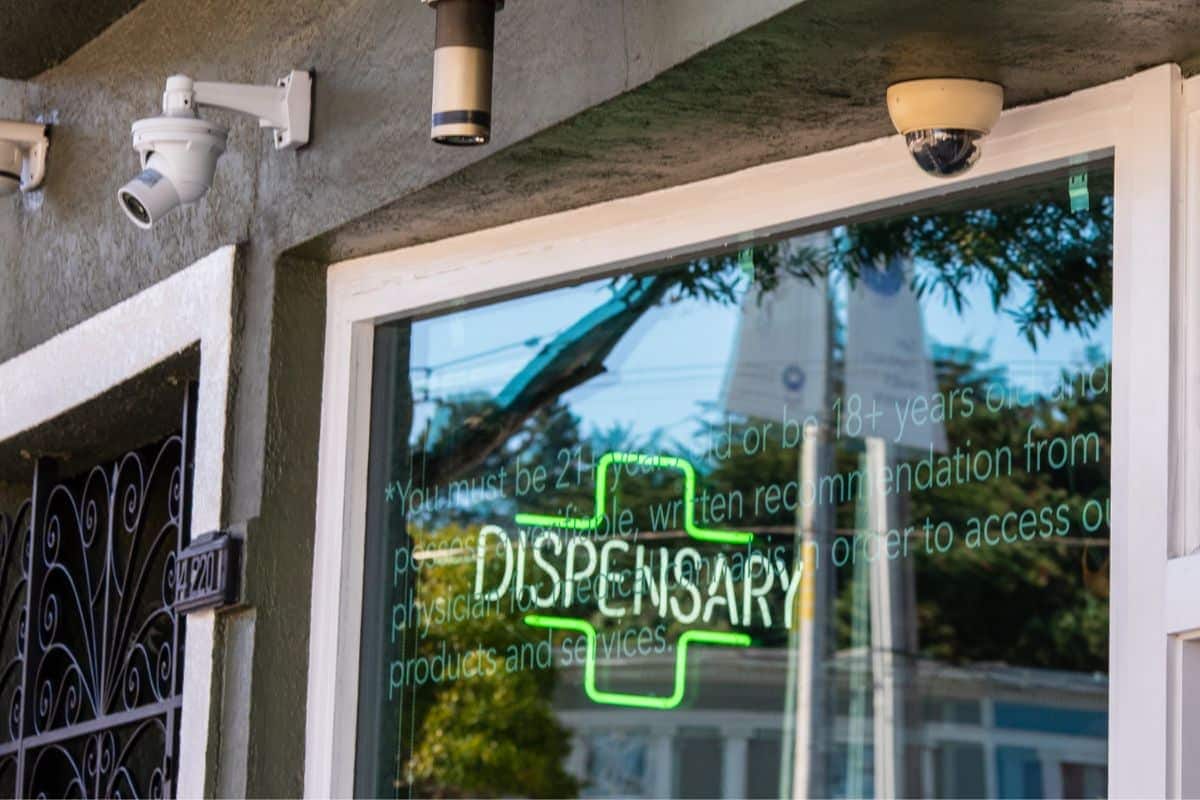
When you visit a dispensary in search of recreational weed, an ample selection of cannabis strains and products await. As you enter, you’re greeted by the ambiance, which is often a blend of professionalism and casual comfort designed to enhance your cannabis experience.
Your guide through this journey is the budtender. Their role is pivotal; they are knowledgeable professionals who are there to answer your questions and provide recommendations based on your preferences and needs. Expect your budtender to inquire about:
- Your experience level with cannabis
- Desired effects (e.g., relaxation, euphoria, pain relief)
- Any preferred aromas or flavors
- Your method of consumption (smoking, vaping, edibles, etc.)
As for the products, they generally fall into these categories:
| Product Type | Description |
| Flower | Typically displayed in clear jars, where you can view and often smell the product. Good weed appears green, often with other hues like purple or orange, and should feature a coating of trichomes. |
| Concentrates | Extracts with higher THC levels, ranging from waxes to oils. |
| Edibles | Cannabis-infused products for eating or drinking. |
| Topicals | Creams and balms for external use. |
Quality assurance is a staple of dispensaries; products are usually tested and labeled with their THC and CBD content, offering you clear expectations of potency and effects. Look for labels specifying strain types—indica, sativa, or hybrid—to align with the experience you seek.
Remember, each dispensary has its own vibe and selection, so feel free to visit a few and find one that resonates with your personal taste. Your confidence will grow with each visit, leading to more curated and enjoyable cannabis experiences.
Cost and Value
When you’re evaluating good weed, understanding its cost and value is crucial. Typically, cannabis is categorized into several types based on quality: low-quality (often called “schwag”), mids (mid-grade), and top-shelf or premium, which includes terms like kine and fire.
Low-Quality Weed:
- Price: Inexpensive
- Characteristics: Harsh smoke, less potent
- Value Consideration: You might save money, but the effects and flavor will generally be disappointing.
Mids:
- Price: Moderately priced
- Characteristics: Decent potency, acceptable flavor
- Value Consideration: A balanced choice offering reasonable quality without breaking the bank.
Top-Shelf/Premium:
- Price: Higher investment
- Characteristics: Excellent potency, rich flavor profiles
- Value Consideration: Delivers the best experience, ideal for those looking for quality over quantity.
| Quality Level | Expected Cost |
| Low-Quality | $ Low |
| Mids | $$ Moderate |
| Top-Shelf | $$$ High |
Remember, the kill implies the effectiveness of the weed – high-quality strains often deliver stronger effects. But paying a higher price for premium cannabis doesn’t just mean better kill; you’re also investing in the craftsmanship behind the cultivation and curing processes that contribute to aroma, flavor, and smoothness of experience.
To discern good weed, look for bright, vivid coloration, a pungent, pleasant aroma, and a sticky, resinous feel to the touch. Trichome density on the buds often indicates higher potency and quality, meaning you could require less product for the desired effect, which factors into the overall value proposition. If you’re offered a deal that seems too good to be true, proceed with caution; it could be indicative of low-quality weed.
By aligning your purchases with your desired experience and budget, you ensure you’re getting the best value for your money without compromising on the quality that meets your standards.
Growers and Production
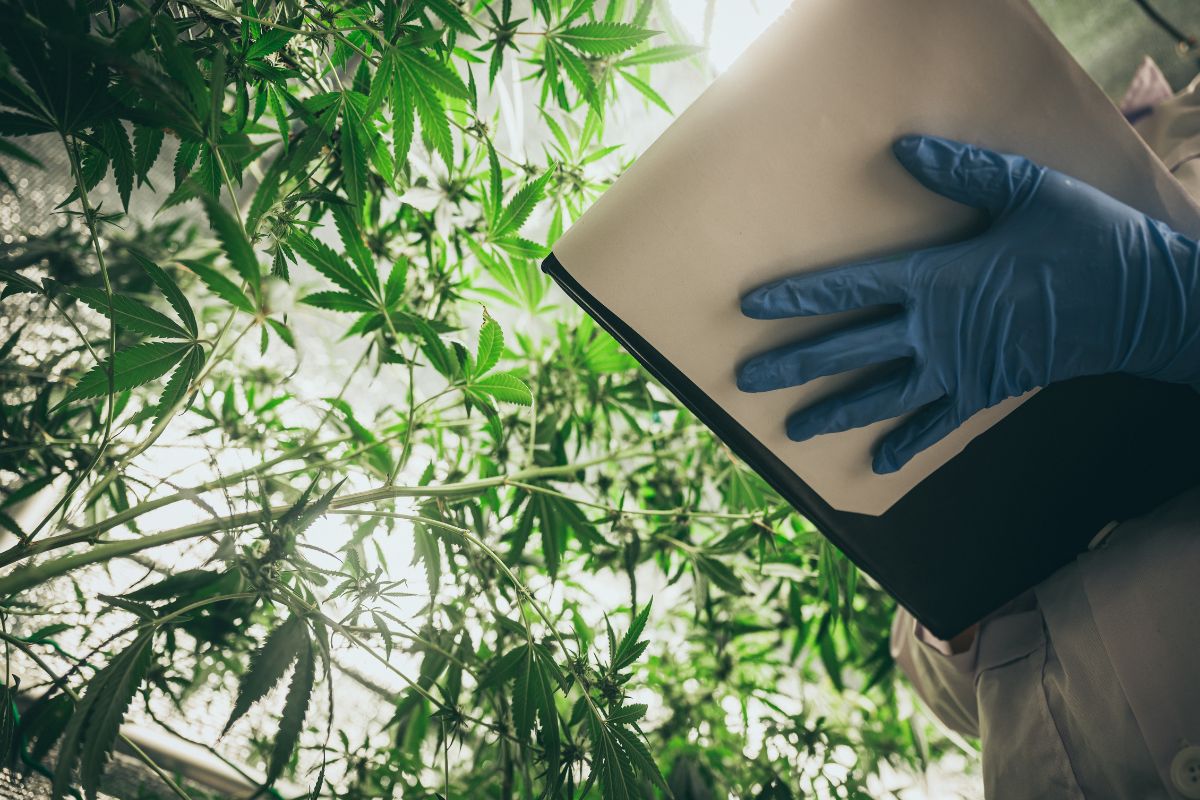
When you’re looking for high-quality cannabis, it’s important to understand the role of growers in production. Growers are the backbone of the cannabis industry, overseeing the cultivation process from seed to harvest. They are responsible for nurturing new strains, selecting the right genetics, and ensuring optimal growing conditions to produce top-tier weed.
Cannabis Production Methods:
- Indoor: Controlled environment with artificial lighting
- Outdoor: Natural sunlight, requires specific climates
- Greenhouse: Hybrid of indoor and outdoor methods
When assessing the quality of cannabis, scrutinize the appearance. High-quality cannabis should have a rich color palette ranging from deep greens to purples with noticeable trichomes—crystal-like coatings where cannabinoids and terpenes reside.
- New Strains: Breeders constantly work on developing new strains to achieve specific effects, flavors, and potencies.
- Harvesting: Timing is critical; harvesting too early or late can affect potency and taste.
As a cannabis consumer, familiarize yourself with the basic indicators of quality:
- Smell: A pungent and aromatic scent is often an indicator of freshness and quality.
- Texture: Buds should not be too dry or crumbly, nor should they feel damp or sticky.
- Trim: Properly trimmed cannabis indicates careful handling and cultivation practices.
Cannabis growers always strive to enhance their cultivation methods to meet consumer demand for premium, potent, and aromatic products. Your awareness of the intricacies of cannabis cultivation can deeply enrich your appreciation for the final product you hold in your hands.
Frequently Asked Questions
When assessing the quality of cannabis, several key factors come into play. Understanding what to look for can greatly enhance your ability to identify top-notch marijuana.
How can you differentiate between high-quality and low-quality cannabis?
High-quality cannabis typically has a vibrant color palette, trichome coverage, a strong and pleasant aroma, and dense, well-trimmed buds. In contrast, low-quality weed often looks dull, may contain seeds and stems, has a lackluster smell, and is either too dry or excessively moist.
What characteristics define the appearance of superior-quality marijuana buds?
Superior-quality marijuana buds are often sticky to the touch due to rich trichome presence. They showcase a bouquet of greens, purples, or oranges, have a pungent and distinct smell, and are free from contaminants or excessive leaves.
What are the indications that weed might be laced with other substances?
If your weed has an unusual color, excessive weight, an unexpected texture, or a chemical smell, it could indicate the presence of foreign substances. Always inspect for off-putting smells or tastes and unusual effects after consumption.
Does the color of the cannabis indicate its quality, and if so, how?
The color of cannabis can be an indicator of quality. High-quality strains often have rich, vibrant colors with plenty of trichomes visible, showing they have been properly grown and cured. Brown or yellow hues might suggest age, poor quality, or improper curing.
What should you look for in a marijuana bud to assess its quality?
To assess the quality of a marijuana bud, you should note the bud structure, which should be dense and well-formed. Trichomes should be visible to the naked eye, and the aroma should be fragrant and indicative of its strain properties.
Can the dryness of weed affect its quality, and what are the implications for consumption?
The dryness of weed can indeed affect its quality as overly dry cannabis may crumble and lose potency, while overly moist bud can encourage mold growth. Ideal cannabis should feel slightly sticky and spring back when lightly squeezed.

